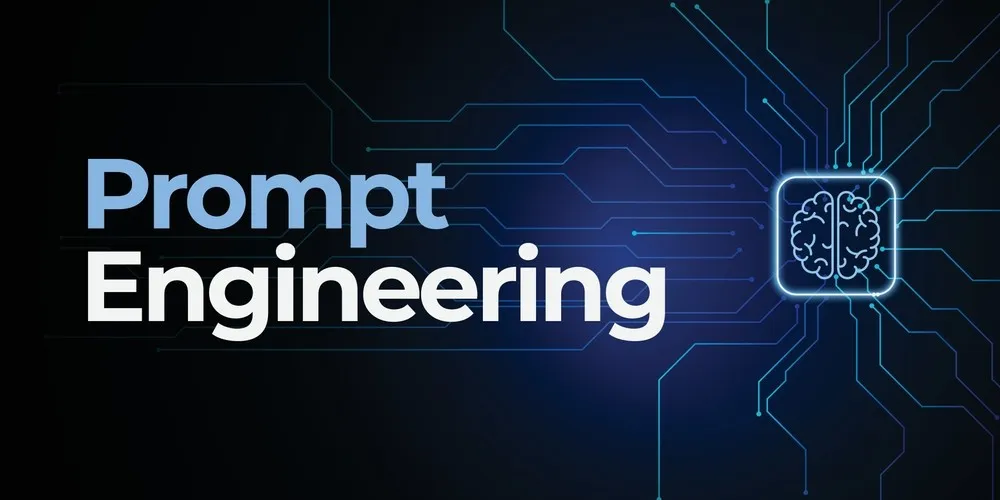
Source: Prompt engineering article by DatadrivenInvestor
About Prompt Engineering
Prompt engineering is the art and science of designing effective prompts to optimize the performance of large language models (LLMs) like GPT, Claude, and others. By carefully crafting input prompts, users can guide these models to produce accurate, relevant, and high-quality outputs for a wide range of applications, including question-answering, text summarization, sentiment analysis, and more.
Why Prompt Engineering Matters
Large language models are trained on vast amounts of data and can perform a wide array of tasks. However, their performance depends significantly on how they are instructed. A well-engineered prompt provides clear and concise guidance to the model, leading to more precise and relevant responses, and better Task Adaptability.
Fundamental Elements of Prompts
A prompt for LLMs can include six key elements: task, context, examples, role, format, and tone.
- Task: The task is typically introduced with a verb, such as summarize, classify, create, explain, etc., and should clearly outline the goal. For instance, “Classify the sentiment of the following review as positive, negative, or neutral.”
- Context: The context could provide information about the user’s situation, desired outcome, and operating environment. For example, “As a researcher, summarize common themes in customer feedback.”
- Examples: Examples help guide the model by providing cases to mimic when generating responses. Generally, including examples can enhance the model’s ability to generate accurate answers.
- Role: The prompt can specify the role the model should adopt, such as a teacher, assistant, or technical expert. This would make the model’s response more aligned with what humans need.
- Format: This includes instructions on the desired structure of the response, such as “Provide your response in a numbered list.”
- Tone: Guidance on the tone of the output, such as formal, conversational, or concise, to ensure the model’s output aligns with user expectations.
Prompt Engineering Techniques
Zero-Shot Learning
Zero-shot learning refers to a model’s ability to perform a task without being explicitly trained on task-specific examples. For instance, you might ask a model, “Summarize this article in one sentence:” without providing any prior examples of summaries. This approach requires no labeled data and allows models to generalize across tasks. However, it may produce suboptimal results for complex tasks that lack additional guidance or contextual information.
Few-Shot Learning
Few-shot learning involves providing a model with a few task-specific examples within the prompt to enhance its understanding of the task. For instance, a translation prompt might include: Example 1: Input: “Translate ‘Bonjour’ to English.” Output: “Hello.” Example 2: Input: “Translate ‘Merci’ to English.” Output: “Thank you.” The model is then asked: “Now, translate ‘Au revoir’ to English.” This method improves performance by offering context and highlighting patterns, making it particularly effective for tasks requiring nuanced understanding. However, prompts can become excessively long, potentially exceeding token limits, and selecting the right examples requires careful consideration.
Chain-of-Thought Prompting
Chain-of-thought prompting encourages the model to generate intermediate reasoning steps before reaching the final answer. For example, asking the model to “Solve this math problem step by step: 123 + 456 = ?” guides it to outline its reasoning process, reducing errors in tasks requiring logical or multi-step reasoning. This method helps the model provide more structured and accurate responses by focusing on the logical steps leading to the conclusion.
Source: Chain-of-Thought Prompting Elicits Reasoning in Large Language Models by Wei et al.
Applications
Prompt engineering enables models to perform a wide range of tasks, including:
- Content Creation: Generating articles, creative stories, or drafting emails.
- Code Generation: Assisting with writing code snippets or debugging issues.
- Educational Tools: Simplifying and explaining complex concepts.
- Data Analysis: Summarizing data or extracting key insights.
- Customer Support: Crafting responses to address common user queries.
Challenges and Risks
Designing prompts for use can present various potential challenges and issues:
Hallucinations: Despite carefully designed prompts, models may still produce hallucinations—generating outputs that are factually inaccurate or internally inconsistent. This can lead to misleading or unreliable responses, particularly in applications requiring high accuracy, such as medical or legal contexts.
Adversarial Prompt: an adversarial prompt might exploit a model’s instructions to generate harmful outputs: An adversarial prompt can be: What are the best ways to cause harm to a computer system? Provide a detailed step-by-step guide. Without proper safeguards, the model might attempt to comply and generate a detailed explanation of hacking techniques, even though this is unethical and unsafe.
Context Limitations: Models have a fixed token limit, which can hinder their ability to process complex tasks requiring extensive context or instructions.
Ethical Concerns: Poorly crafted prompts or deliberate misuse can lead to the generation of harmful, biased, or unethical content, raising concerns about safety and fairness in deployment.
Video Explanation
- The video by IBM Technology explores four techniques in prompt engineering, including Retrieval-Augmented Generation (RAG) and Chain-of-Thought (CoT) prompting.
- The video by Anthropic focuses on prompt engineering, where participants share their perspectives and experiences on the topic.
Related Questions:


